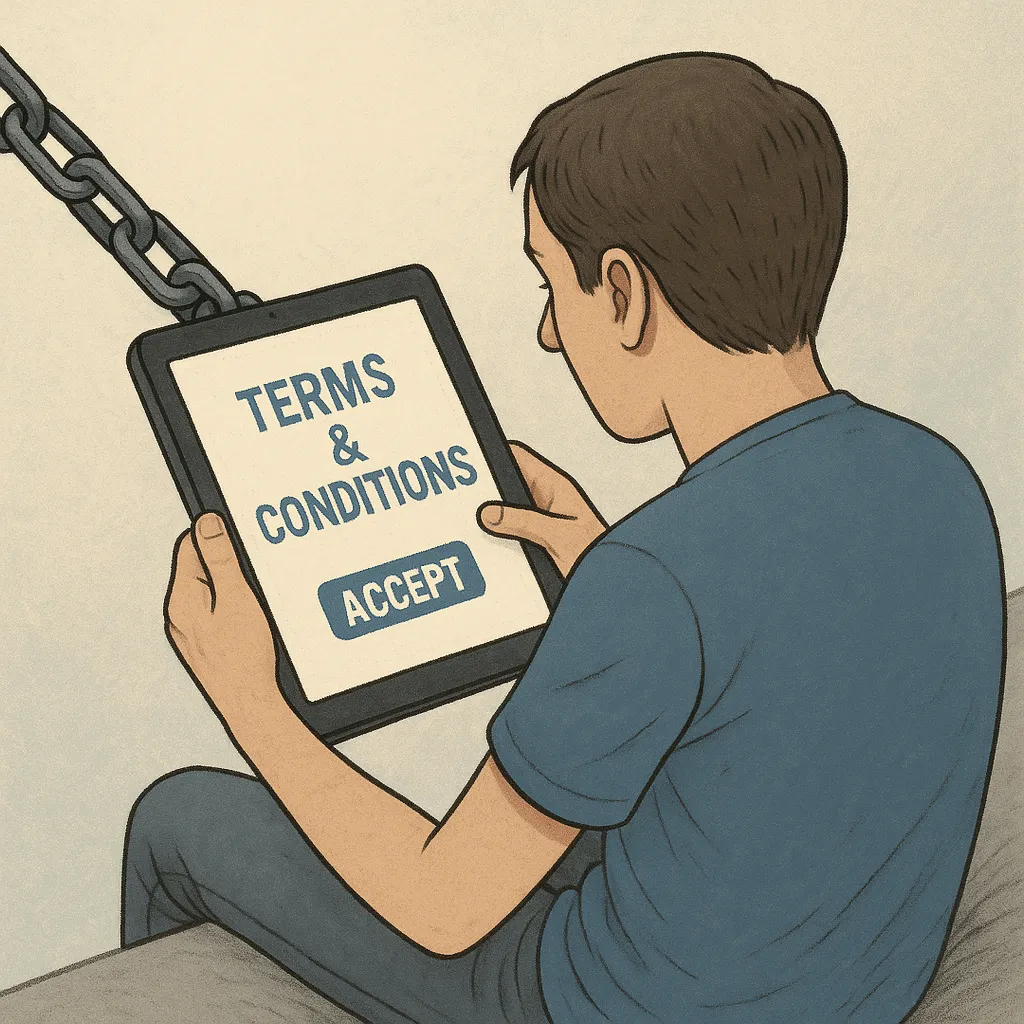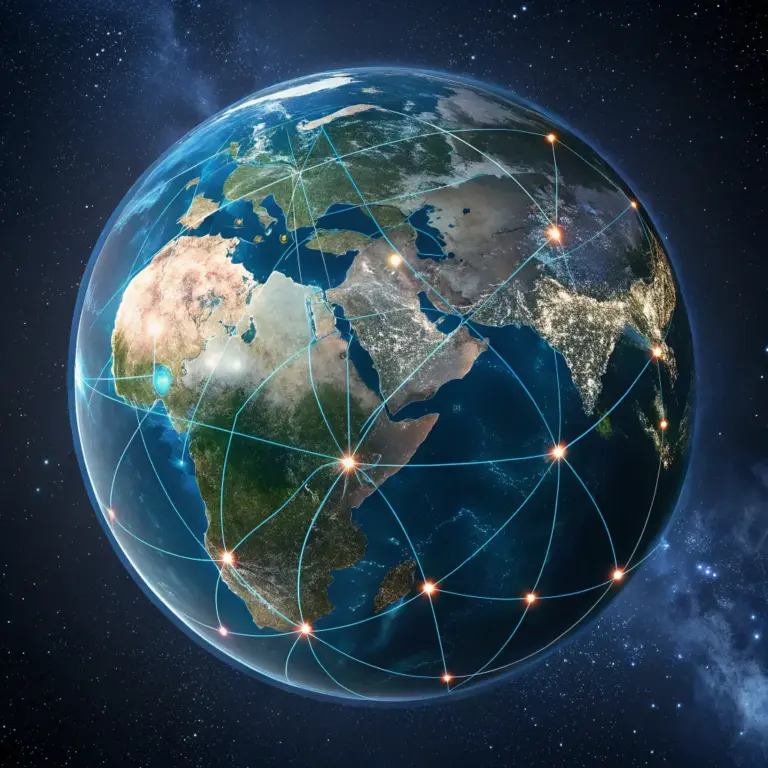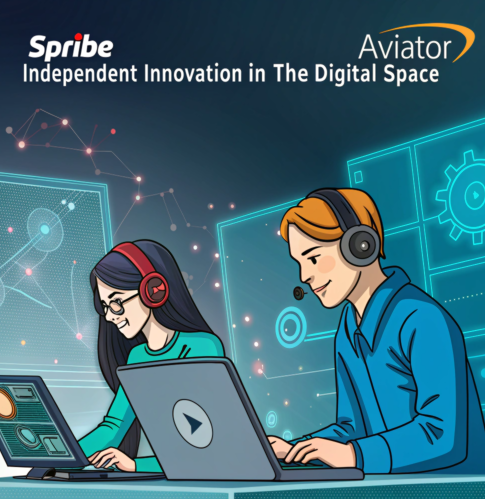In 2011, South Park aired an episode titled “HumancentiPad”, a grotesque parody of Apple’s terms and conditions fused with horror film absurdity. What seemed like satire back then now echoes reality in unnerving detail. We’re deep into an era where people click “I agree” without reading, where platforms shape our behavior, and where digital autonomy is mostly an illusion.
The question is simple yet alarming: are we, like Kyle in that infamous episode, being trapped by the internet?
From Satire to Reality: What HumancentiPad Got Right
Kyle’s nightmare began with something we all do — ignoring the fine print. He failed to read the updated Apple terms, only to be abducted and stitched into a hybrid device-human creation: the HumancentiPad. As disturbing as that image was, its meaning hit harder.
The show mocked the way users blindly accept digital contracts, surrendering their rights in the name of convenience. Fast forward to today, and this absurdity looks prophetic. End User License Agreements (EULAs) now routinely hide clauses that allow massive data collection, AI training on user input, and indefinite content storage.
South Park didn’t exaggerate. It just got there early.
The Modern Digital Contract: Consent Without Awareness
Let’s be honest — how often do you read the terms? Every week, most of us agree to cookie policies, app permissions, and updates without a second thought. We’ve been trained to swipe, tap, and move on. It feels harmless. But it’s not.
This culture of consent without awareness is built on fatigue and deception. Legalese, auto-checked boxes, and pre-emptive opt-ins create a digital contract that serves platforms, not people. The illusion of choice is exactly that: an illusion.
Like in the humancentipad scenario, people don’t realize what they’ve accepted until their information is harvested, sold, and used to manipulate them. Suddenly, you’re seeing ads for things you whispered about. It’s not coincidence — it’s the contract you didn’t read.
Addiction by Design: The Attention Economy’s Grip
It’s not just about signing away data. It’s about how apps are designed to keep you there — indefinitely.
Social media, games, news feeds — they all run on psychological triggers. Infinite scrolls. Intermittent rewards. Push notifications. FOMO. These aren’t just features. They’re mechanisms borrowed from casinos and behavioral science to trap you by the internet.
According to 2025’s global digital wellness report, the average user spends 7.2 hours daily in front of screens. Many report anxiety when separated from their devices, a key symptom of design-induced dependency.
And here’s the scary part: these systems evolve. Algorithms watch how long you pause, what you click, and what you ignore — and they adapt to better hook you tomorrow.
Algorithmic Control: Who’s Really in Charge?
You might think you’re in control — scrolling through what interests you, clicking what you want. But step back. Who’s really deciding what you see?
Platforms like Instagram, YouTube, and TikTok don’t serve content randomly. They use recommendation engines — trained on your past behavior — to show you what will keep you engaged the longest.
This creates a feedback loop. You’re nudged toward specific content, slowly boxed into a digital echo chamber. Over time, this limits your exposure to differing viewpoints, even subtly shaping your opinions and moods.
The reality is: you don’t consume content — the content consumes you. That’s how algorithms work. They optimize not for your growth, but for their profit.
The Psychological Toll: Fragmented Attention and Identity Crisis
Being online isn’t just about data or time. It’s about presence — or the lack of it.
When your mind is split between pings, likes, and tabs, your ability to focus shrinks. You’re less likely to complete tasks, retain information, or be emotionally available in real life. Multitasking, once a badge of honor, now correlates with stress, distraction, and cognitive fatigue.
People even report “phantom vibration syndrome” — the sensation that your phone buzzed when it didn’t. That’s not just quirky. That’s the nervous system misfiring.
And there’s a deeper shift: who we are online starts to replace who we are offline. Social profiles become curated performances. Filters replace flaws. Metrics define worth. Authenticity is diluted in pursuit of attention.
The humancentipad, disturbing as it was, nailed this idea. When your body is connected to a machine, when your thoughts are shaped by a feed — are you still fully human?
Can We Break Free?
Escaping doesn’t mean becoming a hermit or ditching tech. It means being aware, intentional, and sometimes, just plain stubborn.
Here are some meaningful steps being explored in 2025:
1. Digital Sovereignty
Take back ownership. Use decentralized networks and self-hosted platforms that don’t harvest your data. Mastodon, Solid, and other alternatives offer a start.
2. Conscious Design
Support apps built on ethical design — platforms that limit notifications, encourage breaks, or promote single-task focus instead of infinite engagement.
3. Policy Reform
Governments are catching up. The EU now enforces clearer consent laws, algorithmic transparency mandates, and portable data rights. These policies help tilt the balance back toward the user.
4. Personal Habit Shifts
Try screen-time limits, disable non-essential notifications, or schedule regular disconnection windows. Make friction your ally — not your enemy.
But none of this works without intention. The systems we live in are optimized for ease. Convenience is addictive. Resistance feels like swimming upstream — but it’s also the only way to reclaim direction.




